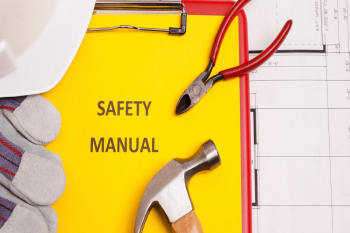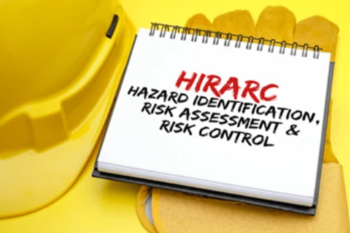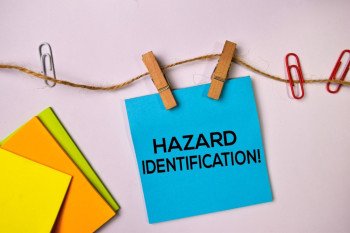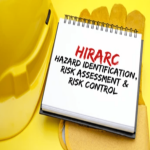FAQ-VENT DISPERSION ANALYSIS
Q1. What is the Objective of Vent Dispersion Analysis Study?
A1. The objective of Vent Dispersion Study is as follows:
The objective of a Vent Dispersion Analysis Study is to assess the dispersion of gases or airborne contaminants released from industrial vents or stacks into the atmosphere. The study aims to determine the potential impact of these emissions on the surrounding environment and human health by analyzing factors such as wind patterns, atmospheric conditions, and the physical properties of the released substances. This analysis helps in designing appropriate venting systems, determining safe distances for human habitation or sensitive ecosystems, and ensuring compliance with environmental regulations.
Q2. What is the Scope of Vent Dispersion Analysis Study?
A2. The scope of a Vent Dispersion Analysis Study typically involves following aspects:
Identification of Emission Sources
Characterization of Emissions
Meteorological Analysis
Dispersion Modeling:
Risk Assessment
Regulatory Compliance
Mitigation Measures
Documentation and Reporting
Q3. What reference is commonly used for Vent Dispersion Analysis Study guideline/standard?
A3. The reference used for Vent Dispersion Analysis Study is as follows:
Guidelines for Chemical Process Quantitative Risk analysis, 2nd Ed., 2000
Guidelines for Quantitative Risk Assessment CPR 18E (Purple book), Committee for the Prevention of Disasters, Netherlands (Edition: PGS 3, 2005).
API-STD-521 Pressure-relieving and Depressuring Systems
Q4. What are the steps for the Pre- Vent Dispersion Analysis study preparation?
A4. Steps for the Pre- Vent Dispersion Analysis study preparation are as follows:
Gather Information
Assumption Register Preparation
Client Approval for Assumption register
Q5. What is the methodology for Vent Dispersion Analysis Study?
A5. Methodology for Vent Dispersion Analysis Study is as follows
Identification of release points (atmospheric vent)
Gathering of inputs required for initiating the study by reviewing project documents such as basic engineering design basis and P&ID
Source term definition and collection of process data of identified release points
Study of meteorological input data and selection of wind speed & stability class.
Source term modeling and consequence analysis using PHAST for the identified release points
Extraction of consequence results
Results analysis, study key findings & conclusions
Reporting & documentation
Q6. What are the documents required for the Vent Dispersion Analysis Study?
A6. The documents required for the Vent Dispersion Analysis Study include the following:
Piping & instrumentation diagram (P&IDs)
Details of nearby operating platforms and manned buildings around discharge points. (e.g. horizontal distances from vent points to nearest operating platforms, 3d model images or photographs etc.)
Weather data (average ambient temperature, average relative humidity, prevalent wind speeds (m/s), stability classes)
Flare datasheet
Vent datasheet
Scaled facility equipment layout
Company guidelines, clauses or standards on consequence analysis (Note: in case if company guidelines are not available, API-STD-521 will be followed)
Q7. What concentration of vent gases is analyzed ?
A7. Following concentration of vent gases is analyzed in Vent Dispersion Study:
As per the objective of the study to understand the impact of flammable and toxic impacts due to dispersion of material released from atmospheric vent and cold venting from flare, below mentioned concentration are analyzed for impact in downwind direction and on ground level:
For flammable gas dispersion - LFL, 0.5LFL and 0.1 LFL
For toxic gas dispersion – IDLH and 0.5 IDLH.
Q8. What are documents deliverables for Vent Dispersion Analysis Study?
A8. documents deliverables for Vent Dispersion Analysis Study are as follows:
Executive Summary
Objective
Scope of work
Vent Dispersion Analysis Methodology
Identification of Release Scenarios
Dispersion Study Results
Study Assumptions
Gas dispersion graphs
Conclusion
Comments Parking Sheet
Q9. What is the Fundamental Assumption for Vent Dispersion Analysis Study?
A9. Fundamental Assumption for Vent Dispersion Analysis Study is as follows:
The initial height from the ground to the vent discharge point is assumed to be 3 meters, based on the guidelines outlined in API 521: Pressure-relieving and Depressuring Systems.
Q10. Which software will be used for the Vent Dispersion Analysis Study?
A10. Following software is used for Vent Dispersion Study:
PHAST/Safeti software.
Q11. What information does the executive summary of a Vent Dispersion Analysis Report typically include?
A11. Executive summary of a Vent Dispersion Analysis Report typically include the following:
Purpose and Scope: A brief overview of why the analysis was conducted and the scope of the study, including the emission source(s) and pollutants considered.
Key Findings: Summary of the main results and conclusions drawn from the analysis, highlighting any significant impacts or findings.
Methodology: Concise description of the methods and models used for the analysis, including any assumptions made and data sources utilized.
Data Inputs: Overview of the key input data used in the analysis, such as emission rates, meteorological data, stack parameters, and receptor locations.
Results: Summary of the dispersion modeling results, including pollutant concentrations at receptor locations, dispersion patterns, and any exceedances of regulatory thresholds
Recommendations: Proposed actions or recommendations based on the analysis findings, such as mitigation measures, further monitoring, or regulatory compliance strategies.
Conclusions: Key conclusions drawn from the analysis, emphasizing the implications for air quality, environmental health, regulatory compliance, and any next steps.
Q12. How is the Output from the model displayed?
A12. Following output from model is displayed:
Flammable gas dispersion side view graphs
Q13. What is the Comment Resolution Sheet?
A13. The meaning of Comment Resolution Sheet (CRS) is as follows:
A comment resolution sheet is a document used to track and address comments, feedback, or issues raised during a review process, audit, or evaluation.
DISCLAIMER
This Blog is provided solely for informational and educational purposes. It is advisable to verify all information presented and consult with appropriate experts or professionals before making any decisions or implementing any strategies based on the content of this blog. HSE Risk Management Services Pvt. Ltd. accept no liability for any actions taken or not taken based on the information provided herein.











